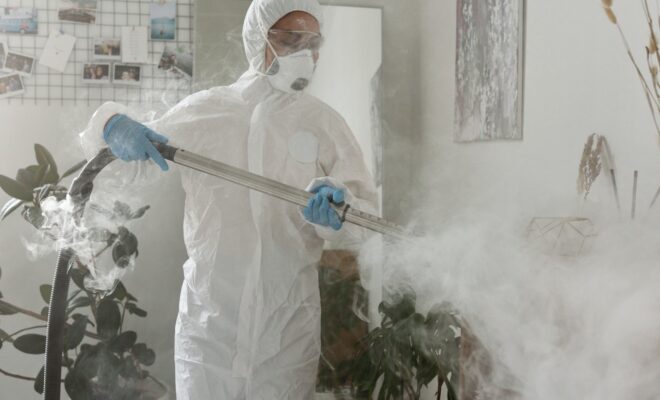
Signs you Might Have Termites in your Home
Termites may appear tiny, but they often leave lots of damage in their wake. Annually, termites and their peers cause an estimated $30 billion in damage to crops and man-made structures in the United States.
Termites are ravenous pests that devour woods and wood products. With this pest in your home, your structural timbers, hardwood floors, and furniture are at risk of being destroyed, forcing you to spend money on repairs and replacements.
While a minor termite infection can force you to spend a few bucks on repairs, a full-blown infestation can affect your finances or cause irreparable damage to your home. To reduce your chances of experiencing a full-blown termite invasion, you must get rid of them before they multiply. And how do you do that? By keeping an eye out for these telltale signs.
1. Swarmers (Flying termites)
Did you notice some brownish long-winged insects hovering around an area in your home? These insects are Swarmers, and they are often an indication of a termite infestation.
Swarmers are winged termites that come from nests in multitudes. These flying pests are the males and females that have exited their nest in search of the ideal mate. If you are unlucky, the mate could be around your home or in it.
Some species of Swarmers fly during nighttime and are drawn to light sources like light bulbs, TV, or laptop screens. Other species of termites will move, in numbers, in daylight, but all drywood termites often swarm after a downpour at certain periods of the year.
2. Abandoned Wings
Swarmers are fond of leaving discarded wings in their wake. These wings are often shed off after they take flight. If you notice a pile of these wings in any area of your home, it may signify termite infestation. In that case, you’ll need to adopt the correct measures to eliminate them to make your home termite-free.
3. Obvious floor or ceiling damage
Though small, the right amount of termite can cause severe damage to wooden and non-wooden components like floors, skirting boards, and ceiling beams. If you observe visible blisters, fissures, or sags on any of these surfaces, it’s an indication of termite infestation.
Another effective and common way to identify the presence of these pests is by knocking on timber around your home. If it gives off a hollow sound, the chances are that termites have consumed its insides. If that is the case, you’ll need to call in pest control. Ensure you choose Terminix pest control as they adopt effective methods in ridding the home of all kinds of common pests
4. Hollow or Blistering wood
Are your structural timbers riddled with blisters, or are some of the woods in your home hollow-sounding? If so, you may have a termite infestation.
Termites devour wood, and they often do so from the inside, leaving several obvious gaps, tunnels, and holes in their wake. When you tap your wrist on an area that termites have damaged, it will produce a hollow sound. This is because part or all of the timber inside has been devoured. Similarly, you may observe strange fissures on internal walls.
Eating and tunneling through wooded complements like door and window frames can also lead to warp, making it difficult to open doors and windows. Other components like wooden ceilings, beams, architraves, floorings, baseboards, and rafters aren’t left out from the termite onslaught
5. Frass
After consuming a meal, it undergoes digestion and comes out as waste. The same applies to termites, especially drywood variation.
After devouring the woods in your house, drywood termites often leave frass or droppings which appear like fecal mounds. If you find piles of these tiny mounds in your home, brace up, termites are lurking in your walls and other wooden structures.
6. Mud Tubes
Mud tubes are like tunnels. Subterranean termites use them to shuttle from one point to another. These mud-like tunnels are often affixed to structures, most times near the foundation.
In addition to being a passageway to food sources, mud tubes also act as a shield for termites. They are very visible and can be fragile. Subterranean termites construct these mud tubes, which consist of soil and termite droppings, to provide moisture for them. If there are moisture-rich environments around your home, destroy them to avoid attracting termites. Additionally, consider storing firewood, mulch, and wood ships outside your home.
Conclusion
Termites are a menace. They cause much damage to the home. But the damage they cause can be reduced if you notice their presence early and take the necessary measures to eradicate them. To keep close tabs on termite activities in your home, you’ll need to insect your home regularly.
Watch out for the signs of termites, so you know the moment they are present in your home. This shouldn’t be a one-person task. Involve everyone in your home. The earlier you take action against this pest, the better for you and your home.


You must be logged in to post a comment Login